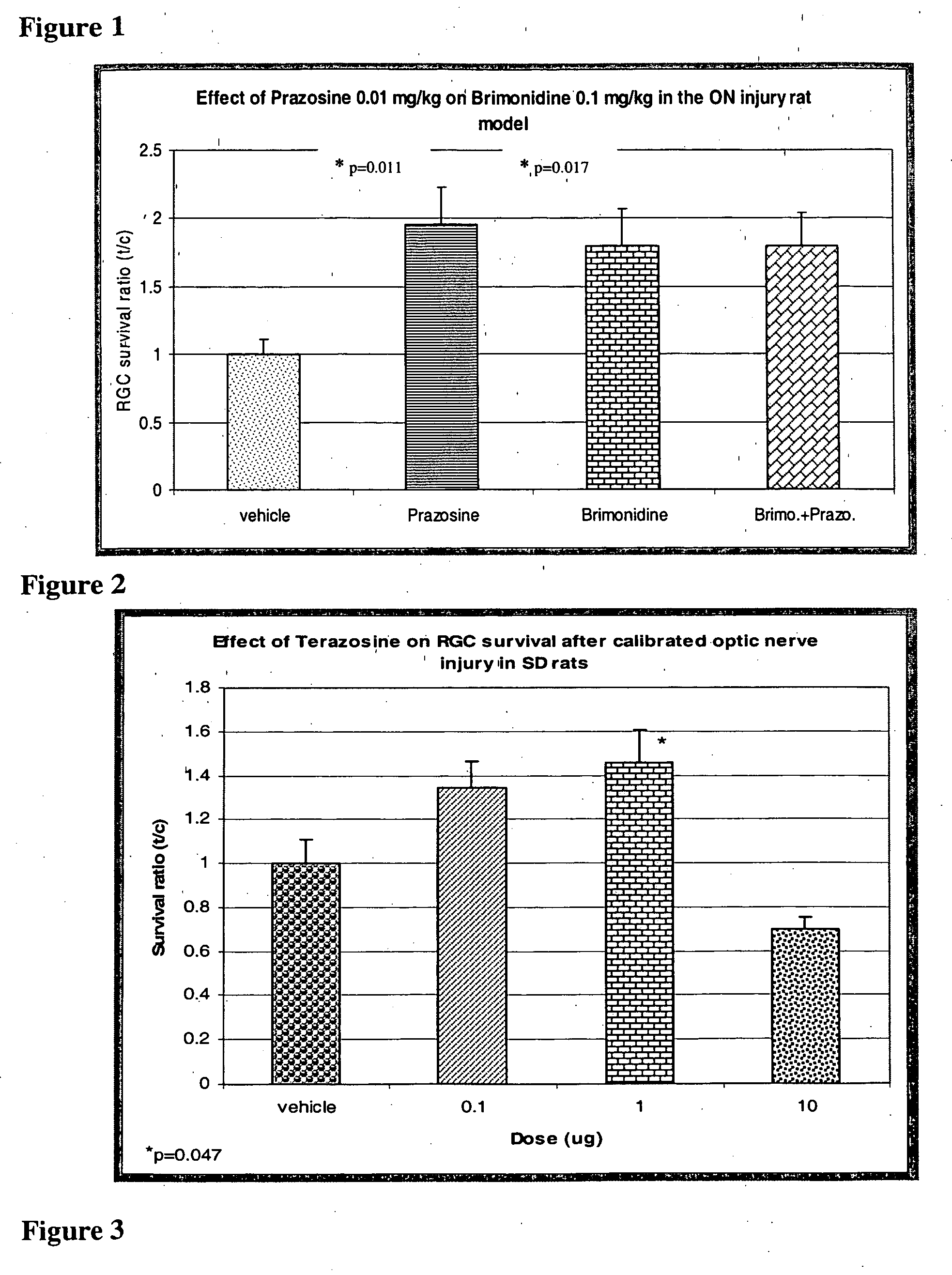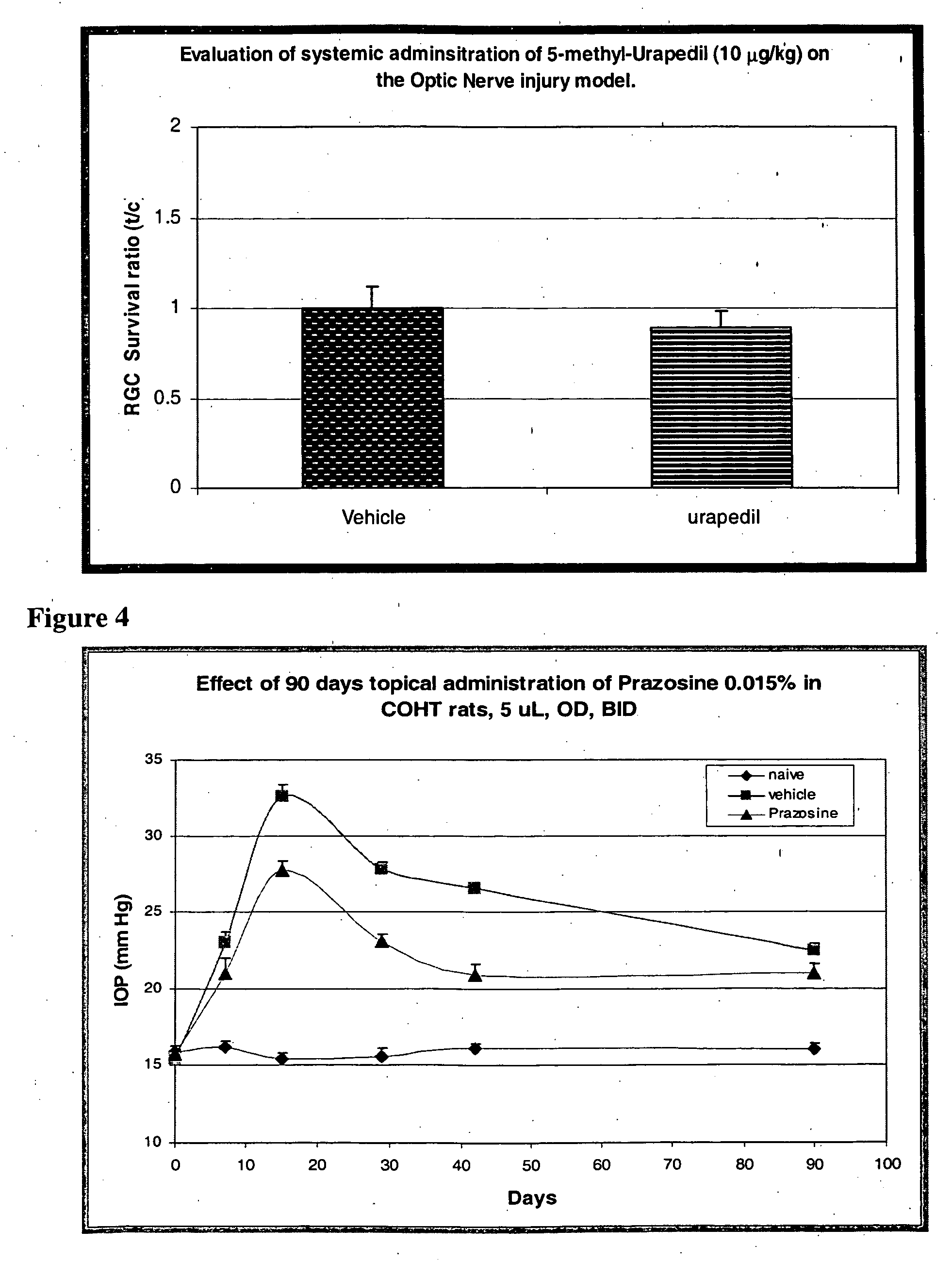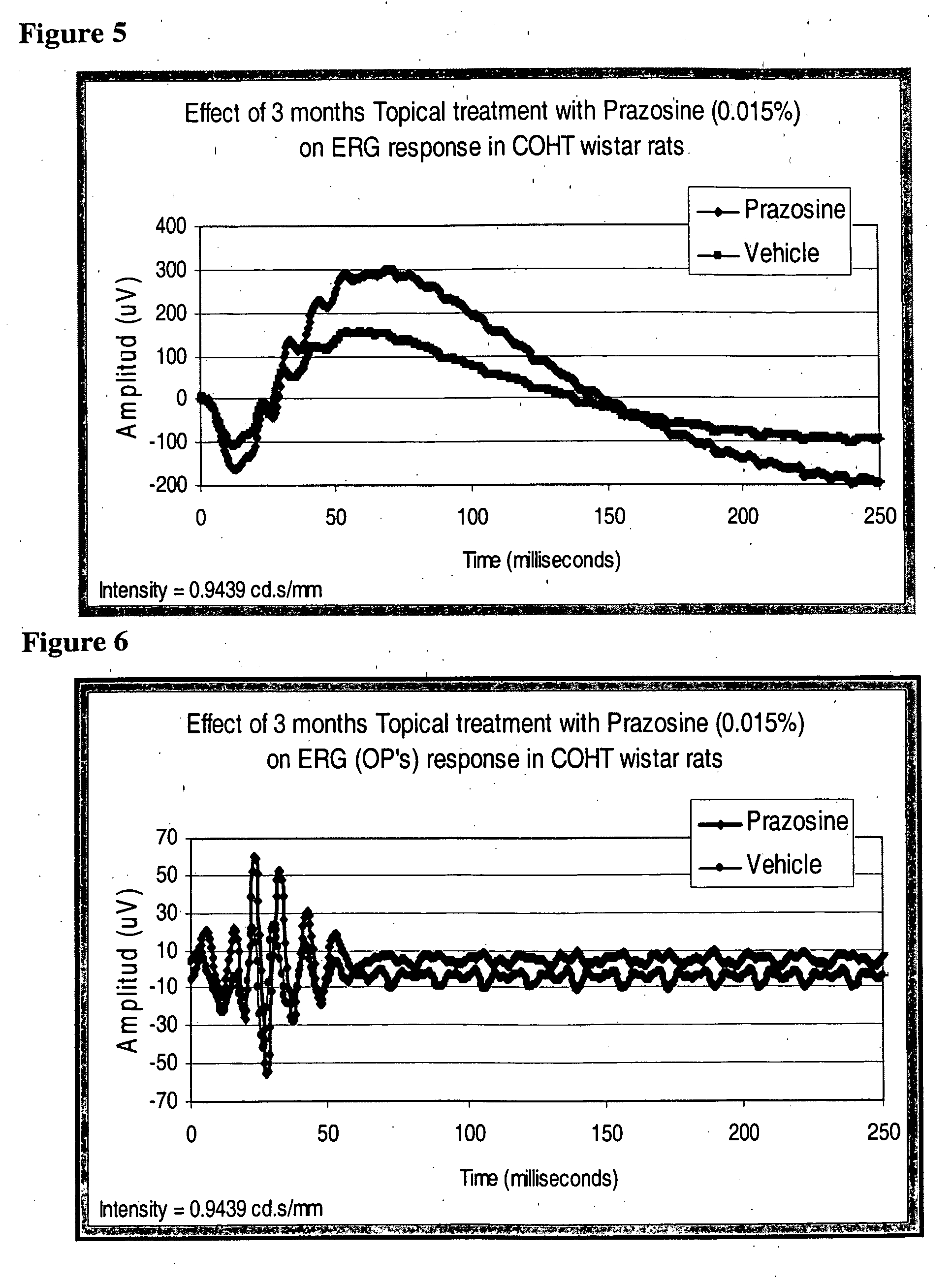Methods for the treatment of ocular and neurodegenerative conditions in a mammal
a neurodegenerative condition and mammalian technology, applied in the field of mammalian ocular and neurodegenerative conditions treatment, can solve the problems of limited dose of drug necessary to most effectively treat high intraocular pressure, reduced systemic concentration of drug, and limited treatment with such a compound, so as to improve pathophysiology or symptoms, and reduce or prevent neuronal death
- Summary
- Abstract
- Description
- Claims
- Application Information
AI Technical Summary
Benefits of technology
Problems solved by technology
Method used
Image
Examples
example 1
Effect of Alpha1 Antagonists on RGC Protection in ON Injury Model
[0093] Prazosine at 10 μg / kg resulted in an almost two fold increase in RGC survival. This protective action of Prazosine is similar to that of Brimonidine at 100 μg / kg dose. The co-administration of these two compounds did not show an additive protective effect and the RGC survival was similar to that when the drugs were given individually (FIG. 1). The effect of Terazosine (0.1, 1.0 and 10 μg / kg) is shown in FIG. 2. The results show a biphasic protective effect on RGC. Protection was observed with 0.1 and 1.0 μg / kg with maximum effect with 1.0 μg / kg dose, and the highest dose tested had no effect. The other compound tested, 5-methyl-Urapedil showed no protective effect at 10 μg / kg (FIG. 3). Obviously, this dose was below an effect dose for providing neuroprotection.
example 2
Effect of Prazosin on RGC Protection in COHT Model
[0094] In this model prazosin was tested after topical application of 0.015% twice a day for 90 days. Treatment was initiated after first laser treatment and Prazosine attenuated the elevation of IOP compared to vehicle treated eyes (FIG. 4). The IOP level reached a steady state after 40 days and it was maintained for the rest of the experimental period.
[0095] At the end of 90 days retinal function was measured using electroretinography (ERG). In vehicle treated animals both A and B wave amplitudes were smaller than those treated with prazosin (FIG. 5). Similarly the oscillatory potential responses were also preserved by prazosin treatment (FIG. 6).
[0096] The effect of prazosin on RGC survival is shown in FIG. 7. Three months of IOP elevation resulted in 37% decrease in RGC. In rats that were treated with 0.015% prazosin, the RGC decrease was 20%. This is a 46% protection compared to vehicle treated group. This is comparable to wh...
PUM
| Property | Measurement | Unit |
|---|---|---|
| pH | aaaaa | aaaaa |
| pH | aaaaa | aaaaa |
| volume | aaaaa | aaaaa |
Abstract
Description
Claims
Application Information
 Login to View More
Login to View More - R&D
- Intellectual Property
- Life Sciences
- Materials
- Tech Scout
- Unparalleled Data Quality
- Higher Quality Content
- 60% Fewer Hallucinations
Browse by: Latest US Patents, China's latest patents, Technical Efficacy Thesaurus, Application Domain, Technology Topic, Popular Technical Reports.
© 2025 PatSnap. All rights reserved.Legal|Privacy policy|Modern Slavery Act Transparency Statement|Sitemap|About US| Contact US: help@patsnap.com



